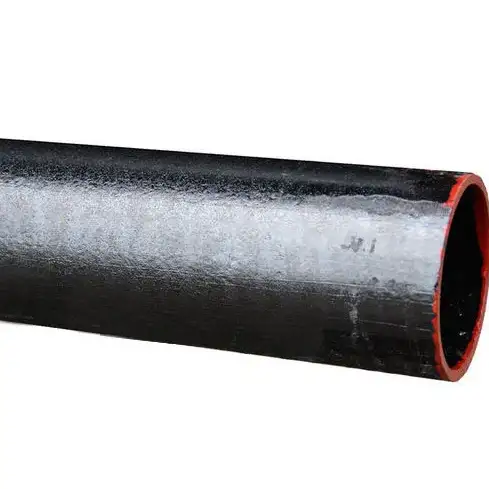I’ve spent two decades working with cast iron pipelines. Over the years, I’ve noticed that the markings stamped on service weight cast iron pipes can seem cryptic. Yet, these markings are vital. They tell us about the pipe’s pressure rating, manufacturing standard, and traceability. Understanding them helps avoid misapplication and costly rework.
1. Defining Service Weight Cast Iron
Service weight cast iron refers to a classification of pipe wall thickness. It’s lighter than extra-strong (XS) but heavier than minimum weight. These pipes meet specific design and pressure requirements—commonly 150 psi working pressure at 150 °F (65 °C). They’re often used for water distribution and sewer systems.
2. Overview of Pipe Markings
Every service weight cast iron pipe bears several stamps, usually cast or embossed on the barrel. Common markings include:
-
Manufacturer’s logo (e.g., foundry name or trademark)
-
Pipe size (in inches or millimeters)
-
Weight class designation (“SW” or “Service Weight”)
-
Standard reference (e.g., “ASTM A74,” “AWWA C200”)
-
Year of manufacture (two- or four-digit)
-
Heat number or batch code
These codes ensure traceability and compliance.
3. Decoding Each Marking
I’ll walk you through each mark:
-
Manufacturer Logo & Name
-
Indicates the foundry.
-
Protects against counterfeit products.
-
-
Nominal Pipe Diameter
-
Expressed as “4 IN” or “DN100.”
-
Medium-length sentence for clarity.
-
-
Service Weight Identifier
-
Marked “SW” or “Svc Wt.”
-
Sometimes replaced by the standard’s weight class number.
-
-
Standard Reference
-
E.g., “ASTM A 74” or “AWWA C200.”
-
Ensures uniform material properties.
-
-
Year of Manufacture
-
Two-digit code, e.g., “25” for 2025.
-
Helps gauge remaining service life.
-
-
Heat/Batch Number
-
Unique batch code.
-
Essential for quality control.
-
4. Comparison: Service Weight vs. Other Classes
Service weight is one among several weight classes. Let’s compare:
-
Extra-Strong (XS): Thickest wall.
-
Standard Weight (STD): Historical grade; similar to SW.
-
Service Weight (SW): Middle grade.
-
Minimum Weight (MW): Thinnest wall.

5. Table: Marking Comparison Across Pipe Classes
| Marking Element | XS (Extra-Strong) | SW (Service Weight) | MW (Minimum Weight) |
|---|---|---|---|
| Wall Thickness (4 “) | 0.280 in | 0.237 in | 0.211 in |
| Design Pressure | 250 psi | 150 psi | 100 psi |
| Weight Class Code | XS | SW | MW |
| Typical Standard | A 74 / C200 | A 74 / C200 | A 74 |
| Application | High-pressure | Water mains | Sewer laterals |
6. Case Study: Urban Water Main Replacement
Background
I was consulting on a 1960s water main in Midtown City. The original pipes bore faint “Standard Weight” marks—some unreadable. The city opted to replace 2 mi of aging mains.
Challenge
-
Original markings ambiguous.
-
Pressure failures under fire-flow tests.
Solution
-
Conducted metallurgical testing on samples.
-
Selected new service weight pipes per AWWA C200.
-
Verified marking stamps before installation.
Outcome
-
Zero leaks in two years.
-
Inspection confirmed correct installation.
This highlights why clear markings matter.
7. Importance of Accurate Markings
Accurate markings:
-
Ensure Safety: Right wall thickness prevents bursts.
-
Maintain Compliance: Meets local codes and insurance requirements.
-
Facilitate Maintenance: Easy to trace batch for recalls.
-
Enhance Traceability: Link failures back to manufacturing records.
8. Conclusion
I’ve shown how to read every stamp on a service weight cast iron pipe. From the foundry logo to the heat number, these markings guard quality and safety. Always verify markings on arrival. Do it. Your projects—and the public—depend on it.
Frequently Asked Questions
1. What does “SW” stamped on cast iron pipe mean?
“SW” stands for Service Weight. It indicates a specific wall thickness designed for a working pressure of 150 psi at 150 °F. It’s the industry’s middle-weight class—thinner than extra-strong but thicker than minimum weight.
2. How can I verify the year of manufacture on a pipe?
Look for a two- or four-digit code near the standard reference. Two digits (e.g., “25”) usually refer to the year 2025. Four digits (e.g., “2025”) may be present on newer production.
3. Why are heat numbers important?
Heat numbers trace a pipe back to its melting batch. If a defect emerges, the manufacturer can pinpoint and inspect all pipes from that same batch, ensuring quality control.
4. Can service weight cast iron pipe be used for high-pressure applications?
No. SW pipes are rated for 150 psi. For pressures above that, you need extra-strong (XS) pipes, rated up to 250 psi or more. Always match the pipe class to system pressure.
5. What standards govern the markings on cast iron pipe?
Primarily ASTM A74 in the U.S. and AWWA C200 for steel water pipes. Local jurisdictions may adopt additional requirements or labeling practices for traceability and code compliance.
